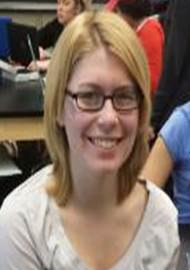Below is a summary of the abstract you submitted. Presenting author(s) is shown in bold.
If any changes need to be made, you can modify the abstract or change the authors.
You can also download a .docx version of this abstract.
If there are any problems, please email Dan at dar78@pitt.edu and he'll take care of them!
This abstract was last modified on May 1, 2015 at 11:04 a.m..

Since joining the SEA-PHAGES project in 2011 as a member of cohort IV, students at The Ohio State University have isolated more than 300 phages (with over 100 posted on phagesdb), resulting in the addition of 13 sequenced genomes to the ever expanding understanding of mycobacteriophage diversity. Sequencing revealed the discovery of an A1 cluster phage, 4 belonging to B1 subcluster, 4 C cluster phage, an E cluster phage, a J cluster phage and 2 F cluster phage, including the first F3 phage. Genome sizes range from 51,409 bp to 155,916 bp and the average GC content is 64.3%. The number of open reading frames predicted by auto-annotation with DNAMaster ranged from 90 to 244. Six of the genomes encode tRNAs, with the majority being found in the phages belonging to C cluster.
The SEA-PHAGES lab was expanded from approximately 50 students in autumn semester (2012 and 2013) to >400 students over two semesters of the 2014-15 year. Lack of incubator space led to the change of the temperature used for incubation from 37° C to room temperature (as suggested by others who have large numbers of students isolating mycobacteriophages). While students were able to successfully isolate phage from their soil samples, we were curious if the change in incubation temperature may impact which phage we are able to isolate. Using the archived lysates of previously isolated phages, we are using plaque and other assays to test the ability of phages isolated at two different temperatures to form plaques on Mycobacterium smegmatis at various temperatures. This information may be useful for other investigators considering different incubation temperatures in their phage isolation protocols.


